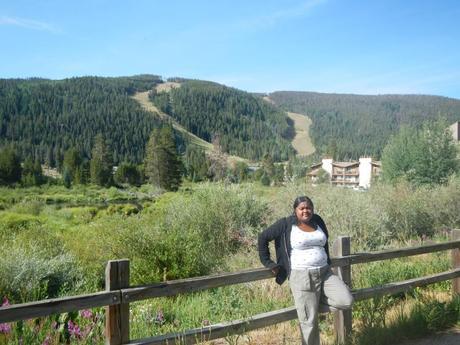Traveling for a living and continuing to get your workout in can be a bit of a challenge. Recently I found out that my body wanted to add to the challenge of working out on the go by throwing another hurdle my way. It turns out I suffer from AMS (Acute Mountain Sickness) which is also known as Altitude Sickness.  I was born and raised at sea level, so when I travel anywhere significantly higher than sea level I seem to suffer from this ridiculous sickness while both resting and exercising at altitude.
I was born and raised at sea level, so when I travel anywhere significantly higher than sea level I seem to suffer from this ridiculous sickness while both resting and exercising at altitude.

Colorado at 14.000 feet
I found out all about Altitude Sickness last year when visiting a friend in Keystone, CO. Driving up the Rocky Mountains, I began to get dizzy and had a killer headache. I just thought that I was dehydrating (also a symptom of AMS) from the change of climate so I started drinking more water and resting. Then I started getting nosebleeds and feeling nauseous as well after a day or two. After asking around and doing some research, turned out I was suffering from Altitude Sickness.
My body was fighting my mind’s need to roam the Earth.

More recently while traveling through Sedona while on our 90 day challenge I found myself having a great deal of trouble getting a good workout in. I started getting tired much faster and couldn’t breath properly. This created a new challenge for me and in doing some research, I found ways to combat the AMS.
Tips for Exercising at Altitude
1. Stay Hydrated – It’s important to stay hydrated in general, but when you are at altitude it becomes more important since your body will be experiencing an oxygen deficit. Hydrating will also help keep the nosebleeds away.
2. Breathe Deeply and Slowly – The air is thinner at altitude and carries less oxygen so shortness of breath becomes common. Breathing slowly and deeply will help you keep the headaches away.
3. Take it Slow – Work your way into your exercise and see where your comfort levels are. Start off slow so you don’t injure yourself or exhaust yourself too quickly. For example, if you a are a runner try shortening your time and distance for the first day or two, until you adjust. If you are lifting weights, reduce the weights by 10 – 20% or complete less reps.
4. Skip a Day – Because your body needs to adjust to the change in oxygenation and pressure at altitude, it’s recommended that you take at least one day off when arriving at your high altitude destination. This will give your body a day to adjust to regular activity before stressing it with exercise.
5. Beware of Heat Exposure – If you are exercising outside at altitude, be aware that you are more likely to suffer from heat exhaustion and also sun burn. Avoid strenuous activity between 11a – 2p (the hottest part of the day) and wear sunblock.
6. Avoid Caffeine - Many of us have a caffeinated beverage before we work out or first thing in the morning. Try reducing the amount you intake while at altitude as it can lead to rapid dehydration.
My job as a full-time traveler will continue to present me with new and exciting challenges. No matter what my ups and downs turn out to be (heehee, pun intended

